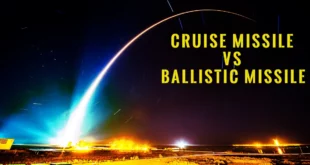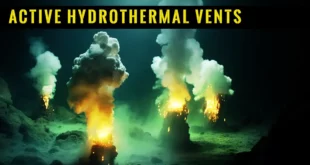GS 3 – Environment The India State of Forest Report (ISFR) 2023, published by the Forest Survey of India (FSI), is a critical document for understanding the status of forest and tree cover in India. It is a biennial assessment of the nation’s forest resources, providing essential insights for policy-making, …
Read More »GS3
SILIGURI CORRIDOR: THE CHICKEN’S NECK OF INDIA
GS3: INTERNAL SECURITY: The Siliguri Corridor, often referred to as the “Chicken’s Neck,” is a strategically vital strip of land in the northeastern part of India. It connects mainland India to the northeastern states and is flanked by Nepal, Bhutan, and Bangladesh. Geographical Significance Location: Situated in the Darjeeling district …
Read More »CRUISE MISSILE VS BALLISTIC MISSILE
GS3: TECHNOLOGY Feature Cruise Missile Ballistic Missile Trajectory Follows a low-altitude, almost horizontal flight path. Follows a parabolic trajectory, exiting and re-entering the atmosphere. Propulsion Powered throughout the flight. Powered during the initial boost phase only. Speed Generally subsonic or supersonic. Hypersonic during re-entry. Maneuverability High maneuverability; can adjust course …
Read More »Active Hydrothermal Vents
GS 3 – Geography Seafloor Hot Springs: These are openings on the ocean floor where geothermally heated water escapes. Tectonic Activity: Hydrothermal vents are commonly found in volcanically active regions, particularly near mid-ocean ridges where tectonic plates are diverging. Formation Process: Seawater seeps into cracks in the oceanic crust. The …
Read More »INDIA AI MISSION
GS3 -SCIENCE & TECH Overview of the IndiaAI Mission Key Goals: Create a thriving AI innovation ecosystem through collaborations between the public and private sectors. Set up over 10,000 Graphics Processing Units (GPUs) to strengthen AI computational infrastructure. Drive inclusive and responsible growth in the AI domain by enhancing data …
Read More »RESTRICTED AREAS ORDER 1963
GS 3 : INTERNAL SECURITY The Foreigners (Restricted Areas) Order, 1963 is a legal framework that regulates the entry of foreign nationals into certain areas of India deemed sensitive for security or strategic reasons. These areas are categorized as Restricted Areas, and access is strictly controlled. Key Points of the …
Read More »PROTECTED AREA REGIME (PAR)
GS 3 : INTERNAL SECURITY The Union Home Ministry has reimposed the Protected Area Regime (PAR) in Manipur, Mizoram, and Nagaland due to growing security concerns over foreign influxes from neighboring countries. This decision highlights the government’s focus on monitoring foreign movements and ensuring security in these sensitive areas. What …
Read More »INNER LINE PERMIT (ILP)
GS 3 : INTERNAL SECURITY The Inner Line Permit (ILP) system, originating from the Bengal Eastern Frontier Regulation of 1873, is a travel document required for visiting restricted areas in certain northeastern states of India. These states are Arunachal Pradesh, Nagaland, Mizoram, and Manipur. The ILP aims to protect the …
Read More »SACRED GROVES: GUARDIANS OF CONSERVATION
GS3: ENVIRONMENT Introduction India is home to 990 Protected Conservation Areas (PCAs) and over 1 million sacred forests. Sacred groves are culturally significant areas protected by traditional beliefs and practices. What are Sacred Groves? Found in states like Maharashtra, Karnataka, Kerala, Tamil Nadu, and Uttarakhand. Small forest patches that act …
Read More »COP29 – Key Highlights
GS 3 – Environment New Climate Finance Goal: A major achievement at COP29 was the establishment of the New Collective Quantified Goal on Climate Finance (NCQG). This goal aims to increase climate finance for developing nations to $300 billion annually by 2035, a significant rise from the previous target of …
Read More »Human Rated Launch Vehicle Mark-3 (HLVM3)
GS3: SCIENCE & TECH The Human Rated Launch Vehicle Mark-3 (HLVM3) is an upgraded version of ISRO’s LVM3 rocket, specifically designed to carry astronauts for the Gaganyaan mission, India’s first crewed spaceflight program. Key Features of HLVM3: Payload Capacity: Approximately 10 tonnes to Low Earth Orbit (LEO). Dimensions: 53 meters …
Read More »INDIA’S RENEWABLE ENERGY LEADERSHIP
GS 3 S&T Union Minister for New and Renewable Energy, Shri Pralhad Joshi, addressed the 5th CII International Energy Conference and Exhibition (IECE) in New Delhi, emphasizing India’s progress in renewable energy and its aspiration to become the renewable energy capital of the world. Milestones and Achievements: Renewable Energy Capacity: …
Read More »ELECTRIC VEHICLES (EVS) ADOPTION
GS 3 S&T Steps Taken by the Government to Promote Electric Vehicles (EVs) Adoption The Government of India has implemented several schemes and initiatives to address challenges related to the adoption of Electric Vehicles (EVs), including high upfront costs, range anxiety, and the lack of adequate charging infrastructure. Key Schemes …
Read More »KISAN KAVACH: BHARAT’S INDIGENOUS ANTI-PESTICIDE SUIT
GS 3: S&T Unveiled by: Dr. Jitendra Singh, Union Minister of State (Independent Charge) for Science and Technology. Significance: Purpose: Protects farmers from harmful pesticide exposure, reducing risks of health issues such as breathing disorders, vision loss, and lethality. Technology: Developed by BRIC-inStem, Bangalore, in collaboration with Sepio Health Pvt. …
Read More »India’s Defense Export Growth
GS 3 – Defence India’s defense exports have reached a record high, with significant contributions from the private sector. The government aims to further boost exports by streamlining policies and encouraging indigenous production under the ‘Make in India’ initiative. Make in India is a flagship initiative launched by the Government …
Read More »Goods and Services Tax (GST)
GS 3 – Economy Goods and Services Tax (GST) is a comprehensive, multi-stage, destination-based indirect tax levied on the supply of goods and services across India. It was introduced through the 101st Constitutional Amendment Act, 2016, and came into effect on July 1, 2017. Key Features of GST One Nation, …
Read More »Mineral Security Partnership (MSP)
GS 3 – Economy The Mineral Security Partnership (MSP) is an initiative launched to strengthen critical mineral supply chains and reduce dependency on a single source or country for essential minerals. It addresses the increasing demand for critical minerals used in clean energy technologies, electric vehicles, electronics, and defense industries. …
Read More »Greenwashing
GS 3 – Environment Greenwashing refers to the practice where companies or organizations falsely claim or exaggerate their products, policies, or practices to appear environmentally friendly when, in reality, they are not. Greenwashing is a deceptive marketing practice used to mislead consumers about the environmental benefits of a product or …
Read More »Green Hydrogen
GS 3 – Environment Hydrogen is the most abundant element in the universe and serves as a clean source of energy. Green Hydrogen is produced by splitting water (H₂O) into hydrogen (H₂) and oxygen (O₂) using renewable energy sources like solar, wind, or hydropower. The process involved is electrolysis and …
Read More »OLIVE RIDLEY SEA TURTLES (Lepidochelys olivacea)
GS 3 – Environment General Overview Olive Ridley sea turtles are the second-smallest and one of the most abundant sea turtle species worldwide. They are renowned for their arribadas—synchronized mass nesting events where thousands of females converge on the same beach to lay eggs. Physical Characteristics Males and females grow …
Read More » Chinmaya IAS Academy – Current Affairs Chinmaya IAS Academy – Current Affairs
Chinmaya IAS Academy – Current Affairs Chinmaya IAS Academy – Current Affairs



















